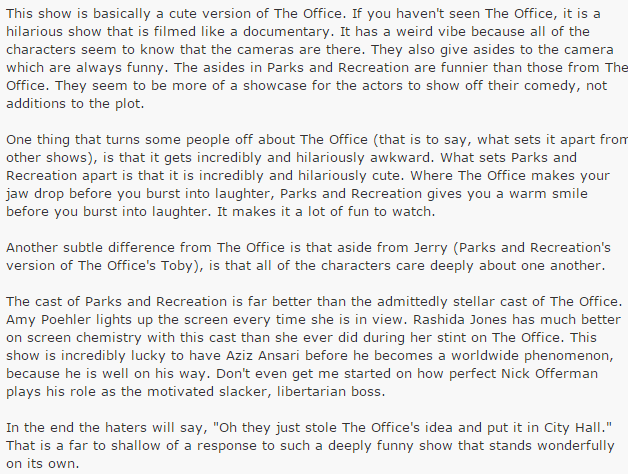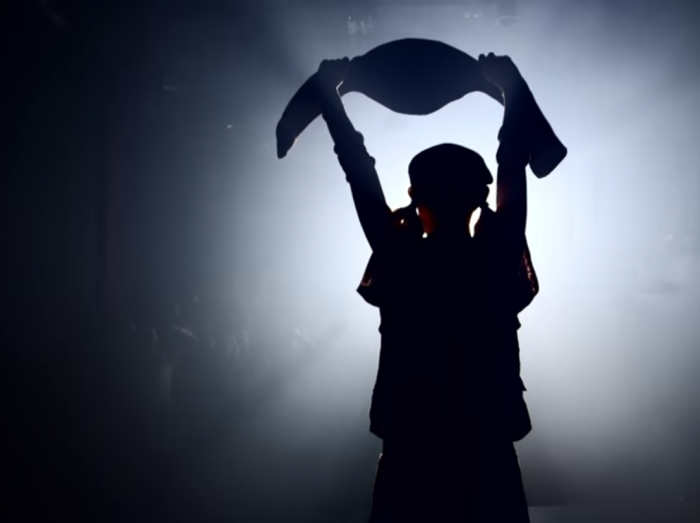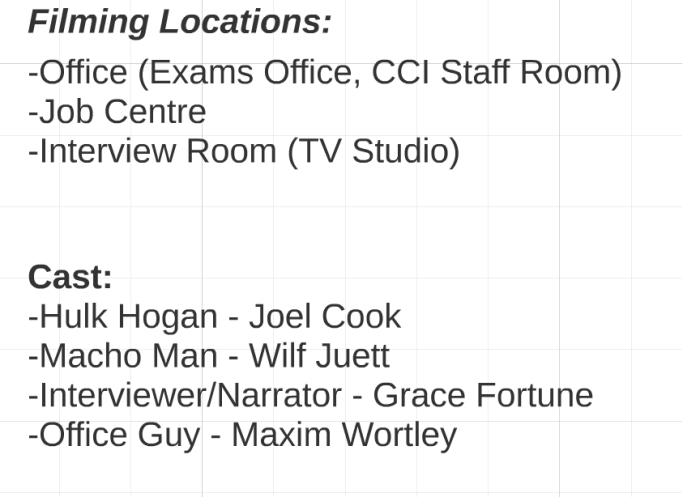I conducted research into my audience, media similar to my film’s genre, various filming techniques and other styles I could incorporate.
I created a survey to see how familiar the themes in my film were to my target audience. I gathered both qualitative and quantitative data in these areas. My survey gathered quantitative data such as age and gender demographics, and whether or not they liked The Office TV show and knew of Hulk Hogan. In that survey I also asked what their favorite comedy film or TV show was. I then followed up on this by doing a focus group on someone who both knew Hulk Hogan and said The Office was their favorite comedy.
This research was somewhat useful. Almost everyone I surveyed had seen The Office or at least heard of it, and many even had it as their favorite. This shows that my target audience was familiar with the mockumentary genre and I wouldn’t have to spend any time in the film establishing it. On the other hand, many people did not recognise Hulk Hogan, reinforcing my belief that archive footage would be necessary to introduce him. In that way, the research will make an impact on my film, but it didn’t reveal much more than I had expected.
Case Studies:
I researched three different media products similar in theme to mine. I chose to look at The Office, Wrestling Isn’t Wrestling and Parks and Recreation. This research helped me find my own target audience by comparing it to the audience for each of these products. Both mockumentaries I studied were genre defining and I learnt a lot by studying them. Max Landis’ Wrestling Isn’t Wrestling also presented methods of presenting wrestling characters to a mainstream audience.
Technical:
I had the idea of using green screen in my film, so I decided to look at how I might go about doing that, and experimented using it myself. This research was valuable as it developed a skill that I will undoubtedly use in the future, but I decided against using it here.












